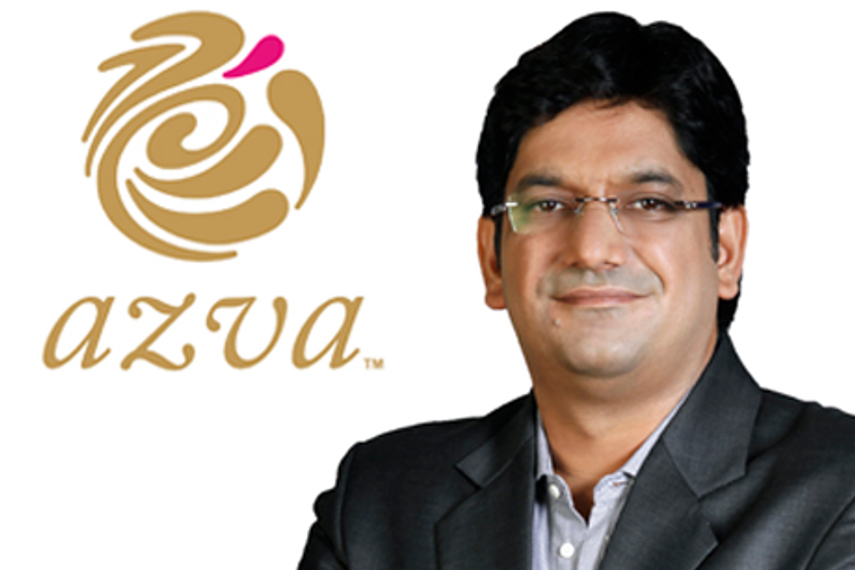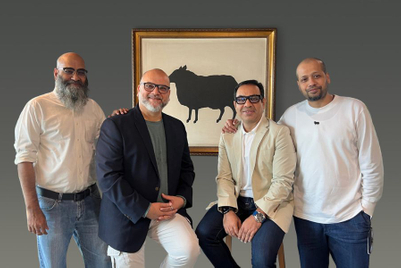
The World Gold Council (WGC) recently launched Azva, a bridal jewellery line, targeting the modern Indian bride. This is the first foray of WGC into creating a jewellery line. WGC has partnered with major retailers like TBZ, Waman Hari Pethe, PC Jewellers and GRT Jewellers across key markets in India to sell Azva. And on the other hand, the body mandated to promote consumption of gold, has ties up with the likes of IndiaPost and Reliance Money to promote gold as a savings product.
Campaign India caught up with Vipin Sharma, director, jewellery, World Gold Council, to find more on the plan for Azva and the insights on gold consumption and its promotion.
From promoting gold consumption to creating a gold jewellery line, WGC has come a long way in India. Could you comment on the journey?
WGC was established in 1987 and we entered India at the same time, as it is a key market. WGC was quite involved in hallmarking and setting up of standards. It has had the benefit of working in international markets, so there was sharing of knowledge and WGC held technology workshops for manufacturers. WGC has worked on a lot of festivals and consumption related to festivals to create demand for gold. Akshay Tritiya is one such example. The core of its role is all about creating and sustaining demand for gold jewellery.
For the first time in the world, WGC has taken an initiative to launch its own jewellery brand in the market, and promote it. Why?
Bridal jewellery accounts for a big chunk of the market in India. Based on our studies and our close interaction with the markets, the insights we got were that there is an opportunity for us to bring innovation to the market that will benefit consumers. We worked closely with manufacturers to interpret our idea and the creative concept and develop it in the form of a collection. On the retail side, we have worked with some of the leading jewellers as retail partners.
Could you elaborate on the Azva range vis a vis the positioning, TG for the brand, and timing of the campaign?
The Azva range is a bridal gold jewellery collection created in 22 karat gold. It is based on the concept of seven vows of Indian weddings. The collection is designed for a pan-India appeal keeping in mind the modern brides. The craftsmanship is traditional but the interpretation of that is modern or contemporary. The TG is modern brides; urban consumers from SEC A, in the age group of 23 to 30 years, seeking differentiated designs and having aspirations of wearing a product that has a modern appeal.
The wedding season accounts for more than 50 per cent of the gold demand. The wedding season normally has two peaks in a year: November to December and April to May. These are going to be two key seasons that drive our campaigns, and products and new introductions.
What forms of media have been used for advertising Azva?
Azva is currently present in 40 outlets in four cities: Delhi, Bengaluru, Mumbai, and Chennai. We plan to take it to 20 cities by 2013. We have used mainstream advertising that is focussed primarily on print and outdoor. For print, we have concentrated on lifestyle magazines and national dailies to start with. And as our distribution expands, we will evaluate the effectiveness of other mediums like TV.
We have a digital presence through Azvavows.com and we will increase our close engagement with our audience through this platform. We are also present on Weddingsutra, a bridal portal.
Could you comment on the creatives?
The entire range of jewellery is based on the seven vows, which a couple takes when getting married. Azva offers a modern take on the wedding vows. The creatives are conceptualised by BBH India and the media buying agency is Maxus.
What are the other marketing initiatives undertaken?
In September, we associated with India Bridal Fashion Week; it is a leading event as far as bridal fashion is concerned. We presented Tarun Tahiliani in the opening show. In another show, we had Esha Deol with her husband Bharat Takhtani walk the ramp adorning Azva jewels. These kinds of association allow the range to be presented to the target audience in the right manner. We will continue to focus on this sphere in the future as well.
Will we see more partnerships that the WGC forges, on the lines of the one with Reliance Money and India Post?
This partnership is a good example of how we are focussing on different segments. In Azva, we are looking at modern bridal jewellery, while in case of our association with India Post and Reliance Money, the objective is to have products available to consumers who are looking at investment opportunities. So, as a Council we look at different segments and analyse what our consumer needs are in each of these markets and then build up initiatives accordingly.
From a consumer perspective, do you see smaller ticket purchases gaining momentum in India, given the rising price of Gold?
The reports for the last quarter of 2012 are not out yet, so it will be difficult to comment on the consumption. However, thanks to Diwali and the wedding season we are now seeing a robust demand for gold. 70 per cent of the gold demand in India is for jewellery while 30 per cent is accounted for gold coins and bars.
Do you see the market dynamics changing from the present, where a majority of sales comes from the unorganised sector?
It would be appropriate to term them as smaller traditional players rather than unorganised sector. Jewellery requires a level of personalisation of service, which is extremely strong when it comes to the traditional small players while national players offer a level of assurance and corporate feel. Markets are responding well to both. Broadly speaking, the branded stores have a market share of 6 per cent while the smaller traditional players have a strong presence like nearly 94 per cent.
An emerging trend in the industry is that the presence of corporate players has gone up similar to organised retail in other segments. We can see a lot more players building up a network of retail outlets - from being present in one city to a region to the national level. That is a trend that is building up. And this could be attributed to the aspirations of consumers to operate and transact in an environment that organised players or retail chains are able to offer.


.jpg&h=334&w=500&q=100&v=20250320&c=1)
.jpg&h=334&w=500&q=100&v=20250320&c=1)


.jpg&h=334&w=500&q=100&v=20250320&c=1)


.jpg&h=334&w=500&q=100&v=20250320&c=1)

.jpg&h=334&w=500&q=100&v=20250320&c=1)
.png&h=268&w=401&q=100&v=20250320&c=1)

.gif&h=268&w=401&q=100&v=20250320&c=1)

.jpg&h=268&w=401&q=100&v=20250320&c=1)



